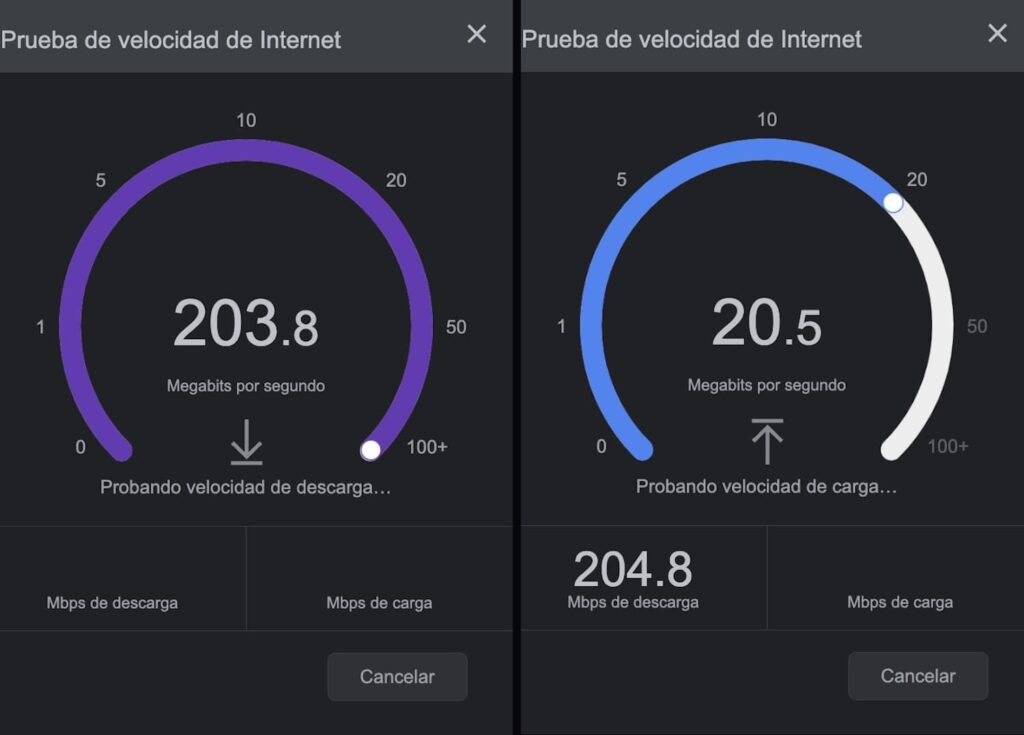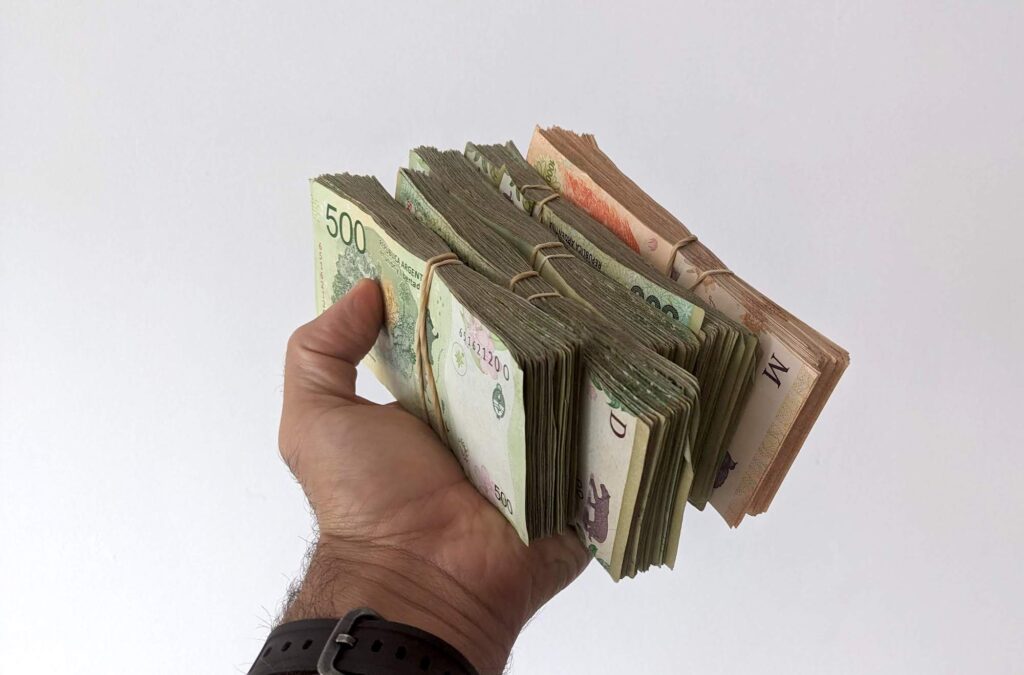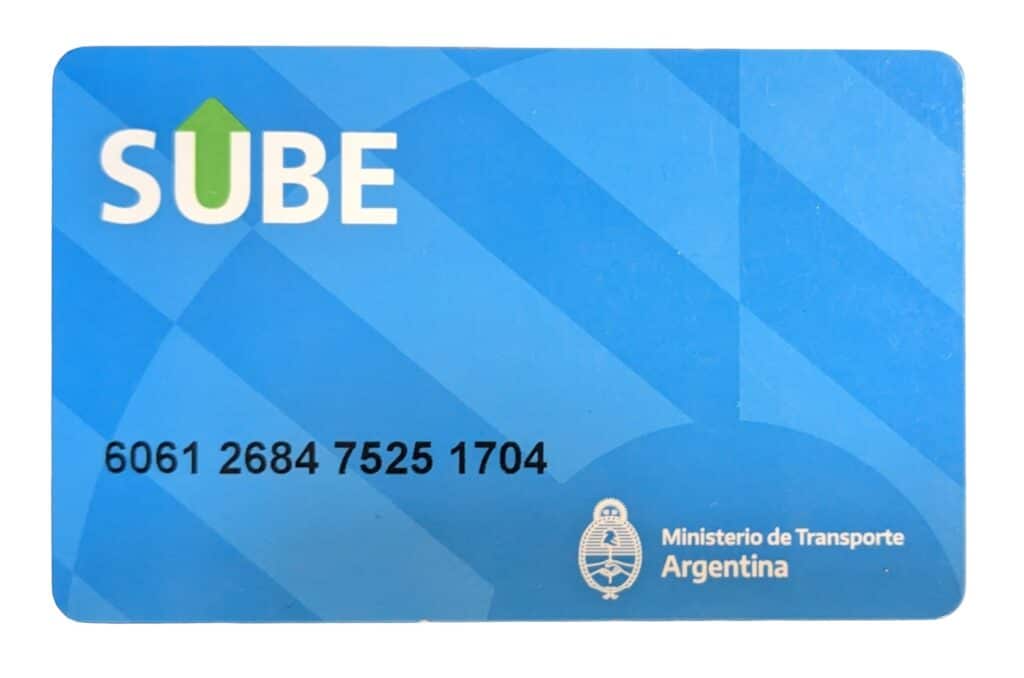Living in Buenos Aires / Argentina as a Visitor — A Complete Guide
After years of thinking about it (over twenty, for me), we were lucky to recently spend a number of months living in Argentina.
As we do everywhere, we lived somewhat normal lives as temporary visitors, writing from home or cafes, and doing normal things like shopping for food, making friends, cooking, trying to keep fit, and of course doing some sightseeing.
In a nutshell, we loved our time in Argentina — in Buenos Aires, but not just in the city — so much that we decided fairly quickly that we’d come back regularly. If nothing changes, we’ll be back in 2024, for sure.
When we arrived in Buenos Aires, we already spoke Spanish, so didn’t focus on learning more Spanish, but that is definitely one reason that many people come to Argentina (or Latin America in general).
As we normally do whenever we set up in a new country, we like to share our setup guide for an extended stay. So here it is — how to live in Argentina / Buenos Aires as a digital nomad, including everything about culture, internet, where to work, food, safety, and so on.
You might also like my slightly chaotic list of things that surprised me about living in Argentina.

Foreword on currency and prices: Don’t say Argentina is “Cheap”
For those who earn foreign currency, Argentina is presently relatively “cheap”. The general cost of goods and services is quite low, around 1/2 to 1/3 of what you’d find in Western Europe, the North America, or other developed places in Asia or Latin America.
But don’t say “Argentina is cheap”. It’s a bit insensitive.
Argentina, for a while, has been in the midst of a spiralling economic crisis. There’s over 100% annual inflation, which means prices go up by 5-10% every month. Interest rates are at 75%.
So, many people, particularly those with unstable employment or on the bottom end of the working ladder, are getting poorer daily. Access to housing is very difficult. Unemployment is rife, social inequality is rising, and access to imported goods or foreign currency is very difficult.
Many earn US$200 a month and subsist on that. On a global scale that’s very little, but even with lower prices, it’s not much locally, either. Even a mid-ranking white-collar office worker for a multinational would often earn less than $1000 a month.
So absolutely do not go about brandishing your foreign currency saying Argentina is so “cheap” on social media. It’s quite insensitive.
It’s not the first time I’ve visited a place where I had tremendous buying power compared to locals (Egypt was one notable one), so I’ve learned to respect that what’s easy for me isn’t easy for others, to practise tact, and to be generous where I can.
Also, due to inflation, I’ll mention prices below in US dollars, which represents a more stable peg of value for foreigners.
Living in Argentina as Temporary Visitors — In a Nutshell
We really enjoyed our time in Argentina. So much so that we’ll definitely be back. I want to make Buenos Aires one of my new homes! Quality of life is great, hospitality for foreigners is high, and it’s as safe as any major European city.
The first thing I’d say to any visitor to Buenos Aires is: Don’t compare Argentina or Buenos Aires with European or Latin American countries / cities. Just enjoy it for what it is, which is awesome enough as it is.
I’ve seen this comparison from both foreigners (which seems rude) and locals, either self-deprecatingly saying “We’re no longer really like Europe” or insisting that they’re not like other Latin American countries. Sometimes the comparison is positive, sometimes negative. A few locals say apologetically “Argentina is becoming more and more like any Latin American country”.
I sense that the source of this comparison is that Argentina has had a tough economic period of late, and in many ways, things have become worse than they once were.
But despite that, there’s still so much to love about Argentina and Buenos Aires without comparing it to anywhere else.
In reality, of course, there are elements of Argentina / Buenos Aires that remind me of Europe sometimes, and of elsewhere in Latin America at other times. For example, some architecture is very European, but there’s much that more isn’t (and is generally “modern”). Many people have Italian or German names, but many more don’t. There are lots of low-rise buildings, like European cities, but Europe doesn’t have a monopoly on that. Yes, there’s jamón, but there are also lots of local cured meats and cheeses that I had never heard of, and the take on asado (barbecue) is very unique. And the pizza would bother most Italians.
In short, Argentina is exactly like Argentina, and that’s fine with me!
General Culture in Argentina
The city of Buenos Aires has received influence from both European immigration and Latin American culture, but it’s quite unique and stands on its own in many ways. Most of our experience is of Buenos Aires, and most of that in the urban centre (we stayed in Villa Crespo, slightly outside the most touristy areas).
Firstly, Buenos Aires is a very open-minded place. There are rainbows everywhere, and people are open about their identity and preferences. You can get vegetarian or vegan food, and bathing for ladies is apparently clothing optional (at least for the top) in places. Having a therapist is a generally normal thing. You get the idea. Some other parts of Argentina are similarly open minded, but more regional areas can be more conservative.
One thing we learned quite early on is that in Argentina, everyone does the kiss hello with everyone. Not just men to women and women to women, but men kiss each other hello as well. It’s a little closer than the European kiss hello — to feel someone’s lips on your cheek isn’t uncommon, especially if it’s someone you know well. The first couple of times you meet someone you might not, but if you’re introduced by someone (e.g. when I met a friend’s male partner), you might.
The kiss-hello nice, but it can get a little cumbersome, at times. Like every time I go to the gym (which has a very social atmosphere), I kiss everyone hello — but sometimes, if I don’t feel like it, or if I’m in the middle of a workout, I don’t. It’s not obligatory. For example, I don’t kiss people goodbye after the gym — I’m too sweaty by that point!
And if you don’t like the idea of constant physical intimacy, you might not like a kiss hello at all. I don’t get the impression there’s anything wrong with not doing it and just shaking a hand. Just be aware that some people might lean in if they don’t know you, and then be slightly taken aback when you don’t.
The relaxed atmosphere of non-judgment extends to socialisation and dining. In my time as a foreigner, I didn’t experience any situations where I felt like I was being judged or gawked at. I could wear whatever I liked to restaurants (I mean, I always had a shirt and shoes on… let’s not exaggerate), I could opt to eat pizza with either my hands or with a knife and fork, and so on. I want to highlight this because some European countries can be quite judgy and touchy about food culture.
In terms of religion — Argentina is one of the least religious places in Latin America, a region which is predominantly Catholic. All of that adds up to very “liberal”. If that’s your jam, then you’ll like it.
I think the only part of Argentinian culture that is a little rigid is the culture of drinking “mate” (see below in the food and drink section). There are just a few social rules like “Don’t touch the bombilla“, or “Don’t hog the mate”. But to even get to the point where you’re drinking mate, you’ll have made a few friends, and they’ll explain what to do.
Argentinians themselves are, like everyone, warm and friendly, but express it in their own way. My experience is that they’re not brimming with enthusiastic grins like Americans and some other Latin Americans. To those who are used to big smiles, Argentinians might superficially seem cold for that reason.
I’ve noticed that in Argentina, smiles come over time — a few meetings. From local shop people, it can take a few visits, over weeks. This is one of the benefits of slow travel!
Diversity is quite interesting in BA. As someone of Persian origin and middle aged, I find I blend in perfectly (olive-skinned people tend to assimilate with age). People ask me where I am from when they hear I have not-local Spanish, and usually guess Brazil or Mexico.
Many people in Buenos Aires just look European / white-skinned. And many people have darker features.
There are relatively few Asian people in BA, though. I don’t really know why. Asians are absolutely not stared at — there’s quite a large Chinese population, many second generation. Yes, there’s prejudice there, and there maybe isolated incidents, but as an Asian in Argentina you will not be made to feel generally uncomfortable. Also, I should note that I saw very few black people in Argentina, even in big cities.
Where to Stay in Buenos Aires
In short, most people would want to stay somewhere in Palermo — Palermo Soho, Palermo Hollywood, or Palermo Botanico — or nearby, like in Villa Crespo (where we ended up). We also stayed in Botanico for a bit, and I thought that was a good area.
If you’re in these areas — or a short walk from them — you’re a short walk from everything and you’ll be able to either walk or get anywhere with a 1000 peso ($3) Uber ride.
I would really check the area though. We booked one Airbnb that we had to leave in a hurry. The host said that it was quiet, and that a bar across the road had closed. Well, it hadn’t… and they played loud music every night from 10pm to 5am. We left after one night.
We stayed just inland of Palermo, in Villa Crespo. This is a bit lower key, with a lot of cool cafes and restaurants, lots of local amenities, but far fewer loud clubs. Generally, this pace suits us more. From our apartment, we don’t hear any unpleasant noises. With the windows closed, there’s no street noise (including no loud scooters, nor any doof-doof of cars with speakers), and no party noise.
Villa Crespo suits us perfectly. Good restaurants, cafes, supermarkets, greengrocers, and fiambrerías within five minutes walk, no obvious tourists, and chill life. There are even good bars around, if that is your thing.
Some people choose to stay in Recoleta. It’s a nice area, but it’s huge. The closer you are to the water, the more soul-less and touristy it gets. For some reason, a lot of people say you “must” visit the waterfront area, but I found it extremely boring.
Internet and Sim Card
In-house internet is satisfactorily fast in Buenos Aires. Without having done an extensive study, in the two apartments we stayed in, we got both very fast upload and download (50-100 Mbps).

This is fast enough for very high-quality video streaming, gaming, etc. It’s not as fast as the fastest fibre optic internet places in the world, like some parts of the North America, Europe or South East Asia, but it’s definitely fast enough for the vast majority of people, and it’s faster than Australia (c’mon, Australia, pick up your game.)
We also found it very hassle-free to get sim cards. We went to a Claro store, took our passports and cash (about 10 USD for 25GB of monthly data), and had activated sim cards within 10 minutes with no fuss. (Some reported that getting a sim card in Argentina as being time-consuming or difficult, and it’s really not — it’s one of the easiest places to get a sim we’ve ever been to, though not as easy as in African or South American countries.)
Because there are sometimes power outages, especially in summer, it’s a good idea to get a big plan.
Money in Argentina
The currency in Argentina is the Argentinian Peso, denominated ARS.
The main thing to know is that as a visitor, you’re going to have to get used to paying cash everywhere — supermarkets, restaurants, everywhere.

The benefit of paying cash is that you get the best rate. There are three effective rates:
- The standard inter-bank rate, a terrible rate. This is the rate you get at ATMs. Don’t get money out at ATMs.
- The “blue” rate, around double the inter-bank rate (i.e. you get twice as many ARS for the USD), which you get at money changing places or through Western Union
- The credit card rate — about 15% off the “blue” rate
Here’s an example of the blue rate vs the standard rate — the exchange rates at our time of arrival in Buenos Aires.

As of time of publication, the rates were
| Where you exchange USD | Exchange rate | Reference |
|---|---|---|
| Blue rate (cash dealers) | 370 | bluedollar.net |
| Credit card rate (Visa and Mastercard, as of late 2022), a.k.a. Dollar MEP | 340 (you pay a ~10% premium) | Cronista |
| Western Union rate | 360 excluding $15 fee after the first time | Western Union |
| Inter-bank rate (ATM rate) | 190.20 (you pay ~2x) | Google etc. |
If you’re staying a few weeks, I’d bring USD and change it. Most hotels and Airbnb hosts know where you can change money. In fact, many hotels do it for you, sometimes at a good rate.
If you’re staying longer, credit cards and Western Union become more convenient. Just bear in mind that if you do transfers in roughly $500 chunks, then the effective rate (including the fee) is about 3% lower than the rate of converting cash. Still, it’s very practical.
So would you use cash to save ~10% over the credit card rate? Sounds like a great deal, right? Except it can get inconvenient. To cover the wide variety of costs of things in Argentina, you have to carry around a stack of bills. The denomination of the notes is going up, but generally we’d need a wad of 10-20 bills for brunch for two, for example. Then another 10-20 for daily expenses on the way home from the supermarket, fruiterers, and so on.
It all depends a bit on your budget, of course, I know people who spend a lot more… but most people spend a lot less.
Then again, if you use your credit card, bear in mind that the prices are relatively low. So even though you could “save a few percent”, you’ll be saving for example $1 on an average meal for two people, or 10c on a bottle of coke.
So what’s the price you want to pay for convenience? Visa and Mastercard are hoping it’s around that much.
The exchange rate of the Argentinian Peso fluctuates a lot. Mostly, it’s becoming less valuable over time. Inflation is also increasing, so life’s getting harder for Argentinians. Bearing this in mind, don’t flaunt your money, and don’t be shy about putting money into the local economy.
One weird thing that happens sometimes is that prices go up with inflation, while the USD rate changes with a bit of lag. This means that there are periods where things may be 10-20% more expensive.
Language in Argentina
Argentinians speak Spanish. They also speak English when needed, though we didn’t try often. You can at least find Airbnb hosts who speak English and who can help you!
English speaking ability isn’t necessarily correlated with education. Some people just like to watch foreign TV shows, or have an interest in global culture.
If you do speak Spanish as a second language, you might struggle a bit with Argentinian Spanish. The accent and intonation are different, the emphasis varies (both due to the voseo and the intonation), and the vocabulary is often different.
For example, take the sentence “Take these avocados and put them in the fridge, then you can eat them later, when you want”.
In Spain, you’d translate this as: “Coge** estos aguacates y ponlos en el refrigerador, así los puedes comer más tarde.”
But in Buenos Aires (specifically, where they say “heladera” rather than “conservadora” for fridge), you’d say: “Agarrá estas paltas y ponélas en la heladera, así las podés comer más tarde.”
** Deserves a special warning: Do not ever use the word “coger” in Argentina. You’d literally be suggesting that someone “F*** these avocadoes”, literally.
See here for a more complete guide to Argentinian Spanish differences.
The main thing to note is that the Argentinian flavour of Spanish is the voseo kind. You don’t have to use it, but you will have to understand it.

In brief, the voseo means
- The most common word for “you” is vos, not tú nor usted. The word vos spans the majority of classes. I find vos more versatile than tú, and only use usted for someone clearly older than me (like, my father’s age). These days, to many people, I’m an usted.
- The conjugation of vos mostly affects the second-person present tense and the second-person imperative tense, mostly through some simple rules, with just a few exceptions.
- Everyone understands the tú and usted form if that’s what you’re used to.
You don’t have to memorise a whole new conjugation table. Actually, the vast majority of vos Spanish comes down to very common phrases, like
| English | Standard Spanish (informal/formal) | Voseo |
|---|---|---|
| What do you want? | ¿Qué quieres / ¿Qué quiere? | ¿Qué querés? |
| What are you saying? | ¿Qué dices / ¿Qué dice? | ¿Qué decís? |
| How’s it going? | ¿Como estás? ¿Como está? | ¿Qué hacés? |
| Chill out / Relax. | Quédate tranquilo. | Quedate tranquilo. (emphasis on da) |
| Pay at the front. | Paga primero / Pague primero. | Pagá primero. |
| Keep the change. | Quédatelo / Quédeselo. | Quedátelo. |
| How’s it going? (with andar) | ¿Cómo andas? (More of a Latam expression) | ¿Cómo andás? |
| Come here. | Ven acá / Venga aquí. | Vení acá. |
| Tell me! | ¡Dime! / ¡Dígame! | Decime! |
| What are you doing? Why are you touching the straw? Have you never had mate? | n/a | ¿Qué hacés? ¿Por qué tocás la bombilla? ¿Nunca tomaste un mate? |
In practise, I find it hard to not use the voseo. I adapt my language to try to fit in. But again, you don’t have to.
The accent in Argentinian Spanish is a little different, too.
- It’s a little “sing-songy”. Argentinian Spanish sounds almost Italian in its inflection.
- The hard elle is pronounced a bit like a soft j, like in French.
Over time, my Spanish became 100% Argentinian. I think it’d be hard to go back. Continental Spanish now sounds so foreign!
Transport and Getting Around
If you’re staying in Palermo, you can probably walk everywhere, though you might walk up to 30 minutes sometimes.
If you want to get around, you can either use an app like Cabify (very popular) or Uber (still used), and you can opt to pay in cash if you don’t want to pay the credit card rate.
For anyone earning USD, GBP, or Euros, you might be surprised at how affordable taxis and Ubers are in Argentina. For example, a ride form the airport cost us around $5, and rides around town were between $2-3, even for rides up to 30 minutes long.
There’s also the option of public transport. You can buy a transport card, called a “Sube”, for around $1 from some metro stations — go inside and ask which stations sell it. Eventually, you’ll find one!

Then every ride is very cheap, even for locals — around 10 US cents.
The metro doesn’t go everywhere, and the bus timetables are a little haphazard (you should add 15 minutes to most schedules), but it’d work well if you have a frequent route, or if you’re just shopping and not pressed for time. We use the bus fairly often.
Argentinian Food — Beyond Asado, Empanadas and Choripán
Yes, if you eat meat, you do absolutely need to go to a local parilla and get typical asado meats: tira de asado (ribs), and then whatever else they offer. I’d suggest vacío (another cut of meat), morcilla (blood sausage), provoleta (a cheese), and chorizo (another sausage), but it’s really up to you. Have a Malbec wine to go with it.
With that out of the way — Aside from meat, you really can get a wide variety of food in Argentina, particularly cafe-style food, and healthy, balanced food. The brunch culture is excellent. I’ve found Argentinian hipster brunch on par with the best in the world — yes, even for my snobby Australian friends, even with there. (The one caveat is the coffee, which is as good as you can expect — but the limiting factor is the economy, as coffee beans are expensive imported items. So please reserve judgment.)
In big cities in Argentina, it’s easy to find things like breakfast bowls with quinoa in them, chicken wraps with vegetables in them, toast with avocado, poached eggs, and interesting toppings. Oh, and it’s very easy to buy fruits and vegetables because there are fruit and vegetable stores (la verdu) on every block, and often sellers on the street selling avocados, bananas, and whatnot.
If staying in Palermo, the fancy part of town that’s out of price range for many locals earning local currency, you’ll find an abundance of places offering healthy food, vegetarian options, gluten-free produce, and so on.
Argentina does have regional delicacies, but by and large, Argentina is a modern country with food you might expect to find in many European countries: pizza, pasta, burgers, etc., and they’re high-quality and healthy.
A few very common local foods in Argentina are
- Choripán — a sausage in a bun… hot dog-like, but can be quite delicious if you get a good one, with lots of nice toppings
- Empanadas — stuffed savoury pastries that come in a few varieties of ground meat, ham and cheese, etc.
- Sandwiches de miga — little cut sandwiches with no crust, with simple fillings like jamón y queso
- Milanesas — crumbed meat, served in a sandwich or with fries and things
- Alfajores — cookies with dulce de leche between them
- Dulce de leche in absolutely everything, all the time
These are all fine, and you can try them once (or don’t… sandwiches de miga are nostalgic to Argentinians but nothing special culinarily), but they’re not how you’re going to eat 99% of the time if you live here. Even someone who doesn’t care about health at all is going to get sick of eating empanadas and choripán by the third day!
Still, you should eat them. A choripán is much closer to a German sausage in a French baguette roll than it is to a hot dog or sausage in a bun.
Other treats I think are really worth trying are dulce de leche (yes, same thing as dolce di latte… But much more ubiquitous), various dairy meats and cheeses (fiambres) from any local almacén or fiambrería, and Malbec wine, which is good (though I’m no expert).
You can get sick of dulce de leche, mind you. I have a sweet tooth, and I do really like it. But, it’s more ubiquitous than chocolate. It got a bit old.
I really like Argentina’s take on pizza. It’s not really like pizza anywhere else. It’s huge and heavy on cheese.

If you’re vegetarian or vegan, you’re in luck. At least in the busy parts of town, we found abundant options on menus and even casually strolled past many cafes advertising vegetarian / vegan food. It’s definitely a friendly city for those diets. We also found this to be the case in holiday towns around, like Bariloche.
One thing I personally think is quite special about Argentinian food is the mate.
You might know this as “hierba mate” or “yerba mate”, but it’s just referred to as mate in Argentina.

Essentially, mate is the traditional caffeinated drink of Argentina (and a few other countries in Latin America), though each country has a different way of enjoying it.
To make a mate, you buy leaves, fill a mate receptacle (it’s also just called a “mate”) roughly to the 2/3 level, and then dose in water at about 80 degrees C from a thermos, drinking it through a straw with a filter on it (la bombilla). You can share the mate with someone. It’s quite social.
See here for my full guide to yerba mate as it’s made in Argentina.
Online Services
While the Internet in Argentina is good, you can’t necessarily use all online services. For example, you can’t order products from the largest online marketplace, Mercado Libre. For that, you need a DNI (a local ID number), and can’t use a passport number.
One workaround we found to use Mercado Libre as foreigners is to do what a lot of locals do to access better prices — we would find products we liked on Mercado Libre, look up their website or Instagram, and buy directly. This is how we bought our mates, for example.
The good news is that a foreigner without a DNI can still order food from the major apps, including Pedidos Ya and Rappi. This includes instant delivery, where we could get basic groceries like milk, egg, and soda delivered within around 5 minutes!
Health, Doctors, and Medicine in Argentina
As a man of a certain age who tends to do contact sports, I generally suffer form at least one ailment or two and need to visit doctors, dentists, and pharmacies. So this is from direct experience!
Local Argentinians have health cards and can access free or very low-cost medical services. But the good news is that as a foreigner, local medical services are still very high-quality and low-cost.
I visited a local doctor and then a specialist for a skin condition, and was shocked at how high the service level was. The doctor saw me at no notice on a public holiday, gave me a script for medicine, and then followed up by WhatsApp twice over the next week, even prescribing me more stuff remotely (I had to fill out an online form).
When I saw a specialist, she did a remote consult over WhatsApp and sent me a prescription.
Both those consults cost about US$10 — which is less than the co-pay for people on American health plans!
I got these scripts filled at various pharmacies with no hassle. They were briefly confused that I didn’t have a health card, but it didn’t affect anything.
Many smaller pharmacies will give you prescription things without scripts. If you have a foreign prescription, most pharmacies will give you whatever you want. Drugs at pharmacies are also cheap, so don’t even worry about that.
One caveat — I did all my health appointments in Spanish. I think they could have done it in English, and they understood my English words for drugs, but nobody tried doing it in English. You may have to pay a bit more for a fluent English-speaking doctor. But in my experience around the world, any educated doctor can get by in English if needed. These days, Google Translate is pretty magical, anyway!
Wrap Up
As I mentioned up the top, we loved our time in Buenos Aires enough that we decided to come back.
Because the economy is unstable, it’s unfortunately not a place where we’d feel comfortable setting up long-term by buying a property.
But we definitely want to spend 4-6 months a year there, enjoying the shoulder seasons (and a bit of the warmer or colder ends of each).
If you’re considering staying in Buenos Aires or Argentina generally for a bit of a remote work period, don’t hesitate. And let us know how it goes!






